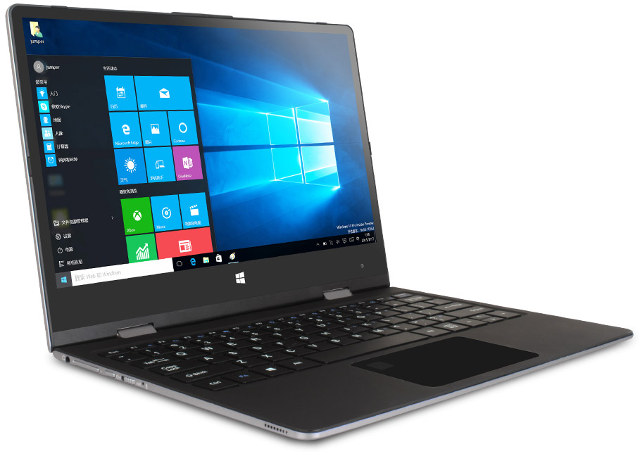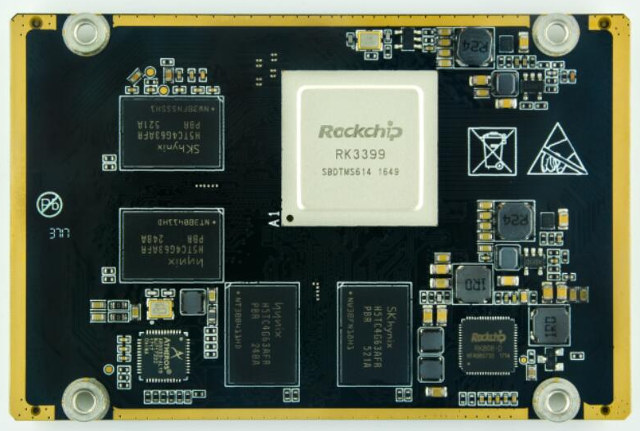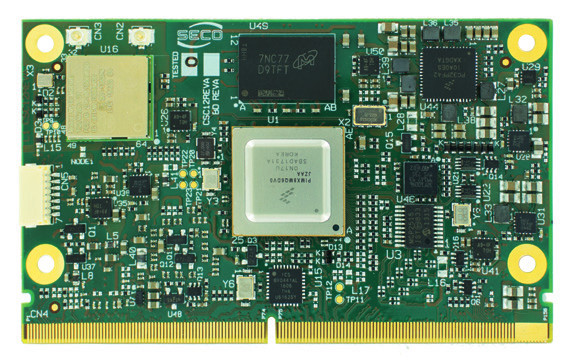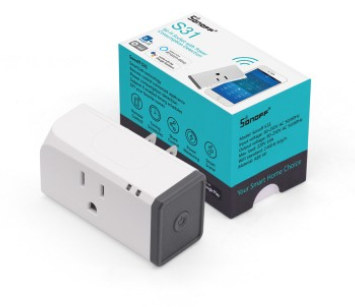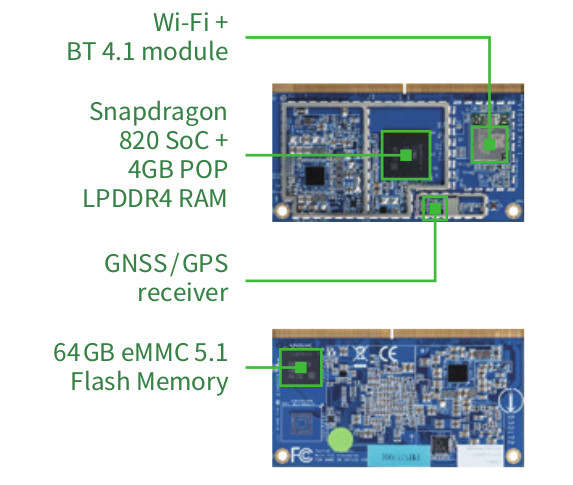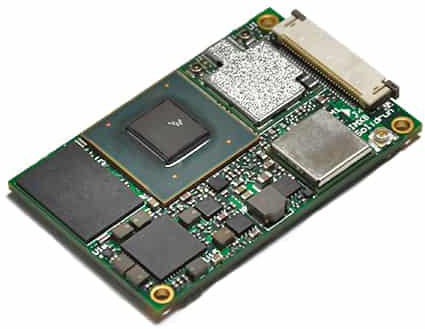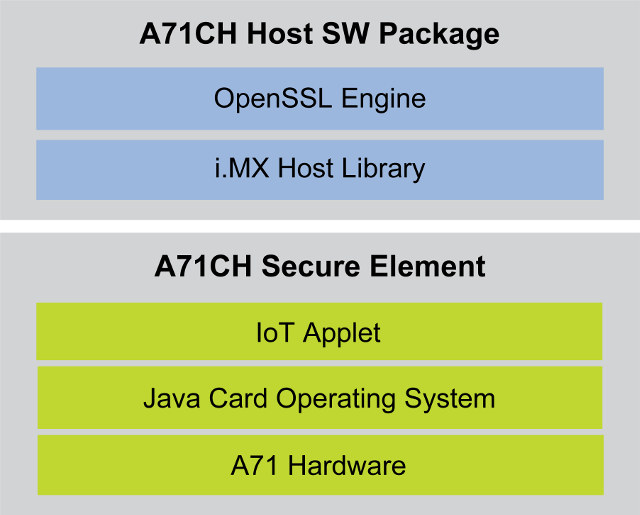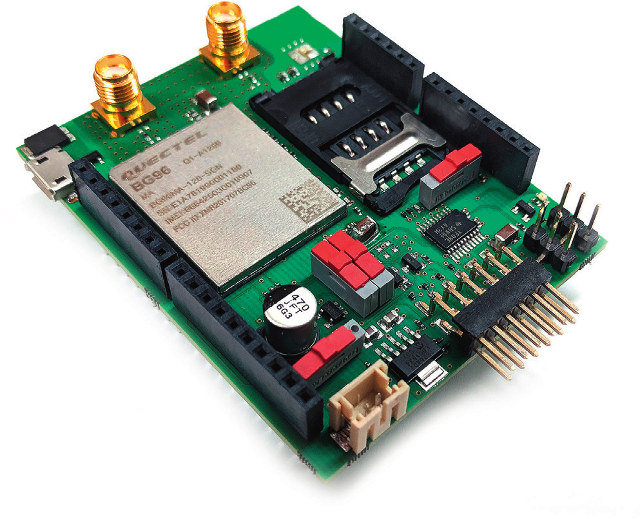We has seen several announcements for products based on the latest Intel Gemini Lake processors at CES 2018 and after with devices such as ASRock J4105-ITX motherboard, or ECS LIVA Z2 mini PC, as well as some leaks for Gemini Lake laptops, but so far I could not find any devices sold on Chinese online sellers like Aliexpress or GearBest. Today, I’ve just found out there’s at least on Gemini Lake devices on Aliexpress: Jumper EZBook X1 laptop with a 11.6″ touchscreen display, Intel Celeron N4100 processor, 4GB RAM, and 64GB storage. Jumper EZBook (Yoga) X1 specifications: SoC – Intel Celeron N4100 quad core Gemini Lake processor @ 1.10 GHz / 2.40 GHz (Turbo) with Intel UHD graphics 600 ; 6W TDP System Memory – 4GB DDR4 Storage – 64GB eMMC flash, micro SD card slot up to 128 GB Display – 11.6″ FHD (1920×1080) IPS touchscreen display Video Output – […]
OpenEmbed Launches $99 em3399 Rockchip RK3399 SoM, and a Compact Evaluation Kit
Looking for a system-on-module based on Rockchip RK3399 processor? So far, you had at least four options with either edge connectors or castellated holes: Theobroma RK3399-Q7 (Qseven) SoM, 9Tripod X3399 core, Boardcon PICO3399 CPU module, or Firefly-RK3399 CoreBoard. OpenEmbed now offers another RK3399 system-on-module with their em3399 SoM using board-to-board connectors interfacing with the carrier board. OpenEmbed em3399 system-on-module specifications: SoC – Rockchip RK3399 hexa-core processor with 2x Cortex-A72 cores, 4x Cortex-A53 cores, and a Arm Mali-T860MP4 GPU System Memory – 2GB or 4GB DDR3L RAM Storage – 16GB to 128GB eMMC 5.1 flash Connectivity – Gigabit Ethernet transceiver (Atheros AR8033) Power Management – Rockchip RK808D PMIC 2x 120-pin board-to-board connectors (0.8mm pitch) with: Display: HDMI 2.0 port with audio for up to 4K @ 60Hz DisplayPort 1.2 with audio for up to 4K @ 60Hz MIPI-DSI (dual-channel) at up to 2560×1600 @ 60 Hz eDP 1.3 (4-lane) Camera – […]
SECO Unveils SM-C12 SMARC 2.0 Compliant i.MX8M Module, CSM-B79 SMARC 2.0 Carrier Board
We’ve already seen several computers-on-module/systems-on-module based on NXP i.MX8/8M processors, most of which use proprietary standards, but so far we’ve covered at least on Qseven 2.1 CoM with Advantech ROM-7720 powered by i.MX 8QuadMax SoC. SECO has now announced their SM-C12 module compliant with another SoM standard: SMARC 2.0. The system-on-module is powered by i.MX 8M dual or quad core processor, supports up to 4GB RAM, offers optional WiFi and Bluetooth connectivity, and plenty of I/Os thanks to the 314-pin MXM3 connector mandated by SMARC 2.0 specification. The module targets home automation, transportation, digital signage and vending machines, multimedia devices, and others applications requiring real-time processing and/or multimedia capabilities. SC-12 module specifications: SoC – NXP i.MX 8M dual or quad Arm Cortex-A53 processor with Cortex-M4 real-time core, Vivante GC7000Lite GPU with support for OpenGL ES 3.1, Open CL 1.2. OpenGL 3.0, Vulkan, DirectX System Memory – LPDDR4-3200 memory, 32-bit interface, […]
Sonoff S31 Smart Socket Review – Power Consumption Monitoring with eWelink Android App
Today we are looking at the Sonoff S31. It is another device in the Sonoff line by ITEAD Studio. Similar to the Sonoff POW, you can see power usage but on the S31 you can keep historical data up to 100 days. This time around I am using it with the standard firmware, and will not be flashing the popular MQTT Tasmota firmware. Specifications per ITEAD website: Max. Current: 16A Voltage Input: 90~264V AC, 50/60HZ Wireless Standard: 2.4GHz, 802.11 b/g/n Receive Sensitivity: 802.11b: <-84dBm(11Mbps); 802.11g: <-68dBm(54Mbps) Output Power: 802.11b:16±2dBm; 802.11g:13±2dBm Security Mechanism: WEP/WPA-PSK/WPA2-PSK Encryption: AES/TKIP Working Temp: -20 °C ~ 75 °C Working Humidity: 10%-80% Product Dimensions: 75.7×39.7x32mm Gang: 1 Weight: 135g Certification: FCC (Download) Sonoff S31 Unboxing & Teardown Taking the S31 apart is rather easy but I did not take it fully apart for fear of breaking it. Just pop the power button off the left side. Then […]
VIA SOM-9X20 Module Powers Smart Recognition and Smart Machine Vision Platforms
At the end of last year, VIA launched SOM-9X20 system-on-module powered by Qualcomm Snapdragon 820 processor coupled with 4GB PoP LPDDR4 RAM, 64 GB eMMC flash, as well as WiFi + Bluetooth module, and a GNSS/GPS receiver. The company introduced two software platform for the SoM and development kit at embedded world 2018: a Smart Machine Vision Platform for manufacturing management and control systems, and a Smart Recognition Platform for facial recognition, object detection, people counting & tracking, etc… VIA SOM-9X20 module specifications: SoC – Qualcomm Snapdragon 820 quad- core processor with 2x high-performance Kryo cores up to 2.15GHz, 2x low power Kryo cores up to 1.593GHz, and Adreno 530 GPU supporting OpenGL ES 3.1/ GEP, GL4.4, DX11.3/ 4, OpenCL 2.0, Renderscript-Next System Memory – 4 GB POP LPDDR4 RAM Storage – 64 GB eMMC 5.1/ UFS 2.0 flash On-module Connectivity Wi-Fi 802.11 a/ b/ g/ n/ ac + Bluetooth […]
SolidRun Announces i.MX 8M Industrial Systems-on-Module, Cubox Pulse Mini PC and HummingBoard Pulse Board
Solidrun has several products based on NXP i.MX6 processors including i.MX6 SoMs, Cubox-i mini PCs, and HummingBoard Edge development board, which were launched between 2013 and 2015, and still sold to this day. But the company has now launched refreshes for all those products based on the new i.MX 8M 64-bit Arm processors with i.MX 8M industrial systems-on-module, Cubox Pulse mini PC, and HummingBoard Pulse SBC. Solidrun i.MX 8M SoM Three different modules – which differ only by their processor and max memory capacity – are available with the following specifications: SoC SOM i.MX8 Dual – NXP i.MX 8M Dual core ARM A53 @ 1.3 GHz (up to 1.5 GHz), Arm Cortex-M4, and Vivante GC7000 Lite GPU SOM i.MX8 Quad Lite – NXP i.MX 8M QuadLite quad core ARM A53 @ 1.3 GHz (up to 1.5 GHz), Arm Cortex-M4, and Vivante GC7000 Lite GPU SOM i.MX8 Quad – NXP i.MX […]
NXP Unveils A71CH Secure Element Chip for Secure Peer-to-Peer or Cloud Connections
The industry clearly has an issue at hand with the security of the Internet of Things, and the problem is complex as some devices are easily accessible due to bad configuration (e.g. default username/password), while others may have security flaws at various levels of the software stack from the low level bootloaders to the operating systems, and applications. Nowadays, devices also need to be upgradeable, and communicate with the cloud, and that introduces other attack vectors in case malignant firmware is installed instead, or a man-in-the-middle attack occurs. While some people may claim security can be achieved by software only, we are seeing security evolving towards combined software and hardware solutions, for example with Arm Trustzone built into SoCs, but some companies are also introducing Secure Element chip, which Samsung has already done and integrated into their Artik modules to secure data from the hardware to the cloud. NXP has […]
Avnet Silica NB-IoT Sensor Shield Works with mbed OS 5, STM32 Nucleo Board
If for some reasons, none of the many NB-IoT boards launched recently suit your needs, there’s yet another option with Avnet Silica NB-IoT sensor shield, that supports – despite the name – also supports LTE Cat M1 (eMTC) beside NB-IoT (LTE Cat NB1), and comes with Arduino headers, as well as a Pmod connector. The board relies on Quectel BG96 module, and can be controlled with Arm mbed OS 5 when connected to STM32 Nucleo board. NB-IoT Sensor Shield specifications: Cellular Module – Quectel BG96 LPWA Module Multi Modes: Cat.M1, Cat.NB1, EGPRS Global bands Cat M1/NB1: B1 B2 B3 B4 B5 B8 B12 B13 B18 B19 B20 B26 B28 B39 (B39 for Cat M1 only) EGPRS: 850/900/1800/1900 MHz Voice Over LTE support (M1 only) – PCM digital audio interface SIM card holder (also optional embedded SIM) Optional GNSS – GPS, GLONASS, BeiDou/Compass, Galileo, QZSS Expansion – Arduino headers, Pmod connector […]


